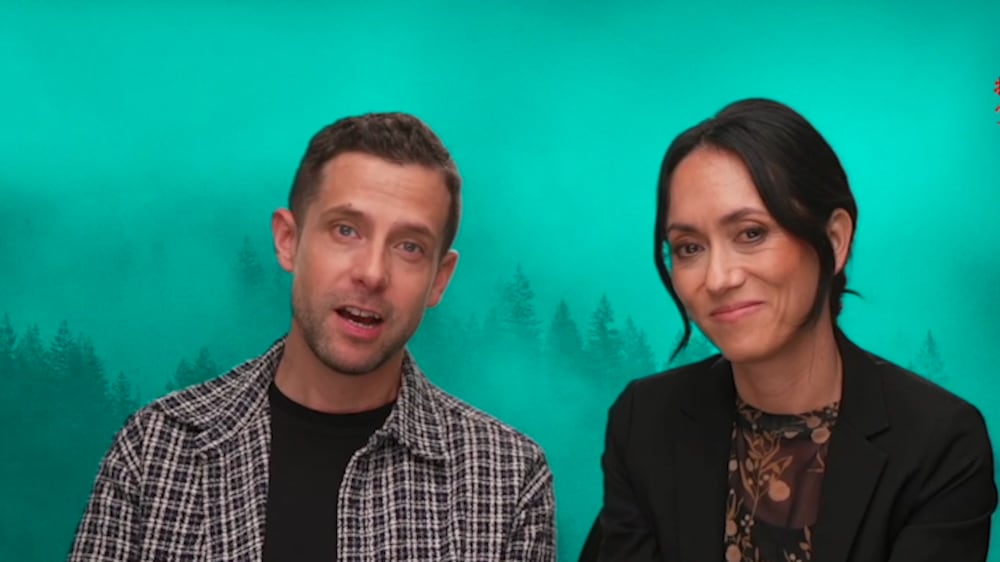Once upon a time, Shogun was a cultural phenomenon.
In 1980, James Clavell’s bestselling novel, which sold 15 million copies, was adapted into a television event that few have matched. Nearly a third of American households tuned in to watch an unforgettable fiction unfold in feudal Japan.
While this year’s big-budget remake may never reach that level of popularity, it is one of the few series released in the past several years that feels worthy of that honour.
The 10-episode mini-series was declared the most immersive epic since Game of Thrones by dozens of rave reviews before its premiere on Disney+ on Tuesday. It also improves greatly on the original – and addresses the many criticisms levied against it, particularly by the Japanese.
For a show this consistently brilliant, we have husband and wife co-creators Justin Marks and Rachel Kondo to thank. But was this the result of a meticulously laid-out plan? Far from it.
“It was chaos,” Kondo admits to The National.
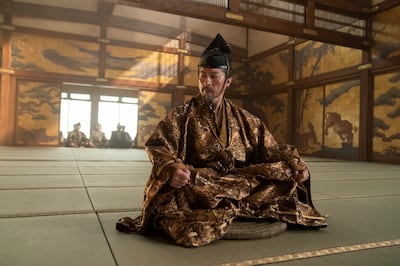
She adds: “In hindsight, it’s like: ‘Look how clever you guys are for building this machine!’ But no, we built the mechanism through which we told the story as we were telling the story. We would make mistakes, acknowledge them and correct them over and over again."
Or, as her husband puts it: “We were still building the car as we drove it – no, as we were learning to drive it!”
The thing is, they wouldn’t trade that chaos for anything. In many ways, that’s exactly how Shogun became such a resounding success.
It begins in 16th century Osaka; their leader has died, with no heir old enough to replace him. The local governors are now jockeying for power – which puts a target on the back of the charismatic and wily Lord Yoshii Toranaga (Hiroyuki Sanada).
Meanwhile, a British navigator named John Blackthrone has crash-landed nearby, much to the ire of the resident European merchants, who fear he may expose their secret treachery against their supposed allies the Japanese.
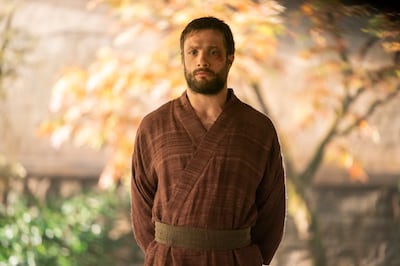
The only way for the two to survive is to join forces against their powerful enemies.
The show was supposed to be filmed, like the original, in Japan. But then the pandemic happened and everything changed. Marks and Kondo had to instead build their car in the middle of the Canadian wilderness, and make it feel as Japanese as possible.
“The pandemic happened about three weeks after we got out of the writers' room, and then we spent about a year and a half sitting on our hands, trying to figure out a plan for how we could execute this,” says Marks.
“Fortunately, in that time, I think it gave us a lot of opportunity for some navel-gazing.”
Firstly, they started interrogating their story and thinking about the many criticisms levied the first go-around. Secondly, the story would no longer focus primarily on Blackthrone’s perspective. The Japanese characters were now just as integral, and they prioritised cultural authenticity above all else – even beyond what the original text offered.
“We really started focusing on cultural nuance,” Marks adds. "We turned the pages again and again, speaking with our Japanese producers, Japanese cultural advisers, language advisers and historical advisers to really even beyond where the book was towards a place of greater authenticity."
In Mark’s view, however, this was not as flawed a narrative as some had claimed. This was about enriching the material, not rejecting it.
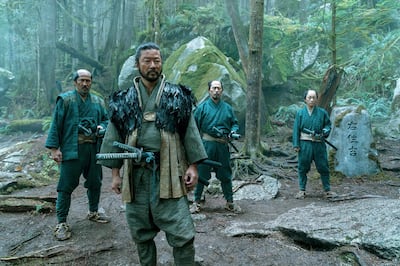
“When we dug deeper into the book, it was pretty amazing for both of us to see just how far ahead of his time Clavell was,” Marks explains.
“He was very focused on this idea of how do we encounter other cultures? And how do we encounter ourselves in these other cultures? I don’t think it’s a white saviour narrative. Rather, it's an interesting counterpoint to that narrative."
He adds: “Everything that happens may have happened regardless of whether Blackstone landed there in the first place. The journey for him is really towards acceptance and towards surrender to all he can’t control, which we think is a pretty modern message to today."
Kondo agrees, adding: “We were asking the same questions that Clavell was, but in our case, we were trying to ask those questions from the filter of today, with modern experiences in mind.”
And since they could not bring themselves to Japan to bring that message to life, Japan came to them – that they made sure of.
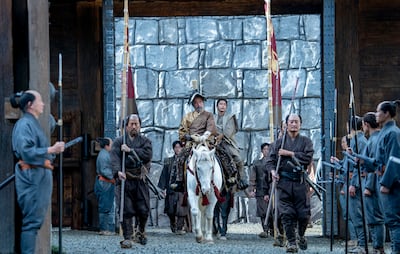
“Everyone had devoted their careers to Japan, including the art department, hair, make-up, wardrobe," says Marks.
"Then every day we would find some other place we were lacking, and then find someone else who was an expert on that thing and fly them over. It was all done on the basis of intuition and accepting what we didn’t know."
The shoot itself was difficult – going on for months longer than the original plan – but they would not have traded the unwieldy weather of the wilderness for anything.
Marks adds: “It was a rough winter, but that was everything we asked for. It was this beautiful, untouched landscape, and we leaned into that. In fact, on the days it wasn’t raining, we brought in the rain, because we had to maintain the wet, beautiful, misty energy that we were going for with this show."
Kondo adds: “This is a timeless story in so many ways. We just wanted to create a timeless show to go with it."
Shogun's first two episodes are now streaming on Disney+ Middle East, with new episodes released every Tuesday. The first episode is available to stream without a subscription.
